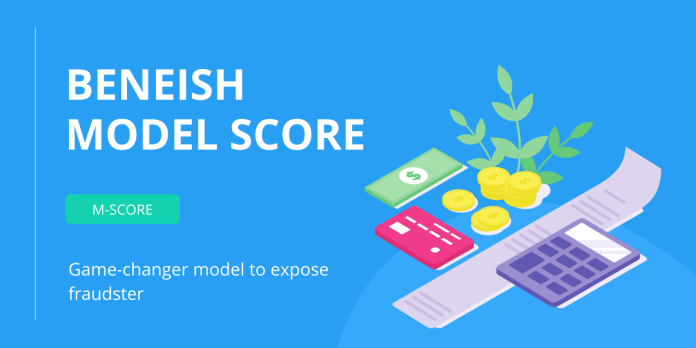Have you ever felt a pang of suspicion as you scanned a company’s financial reports, their profits gleaming a little too brightly, their growth a tad too meteoric? Well, fear not, fellow investor, for the Beneish Model, is here to be your financial Sherlock Holmes!
Developed by Professor Meshach Beneish in 1999, this model isn’t just another set of accounting jargon. It’s a fraud-sniffing equation, analysing eight key financial ratios to calculate an M-Score – your red flag in a sea of seemingly green numbers.
Why M-Score is a game-changer?
Imagine confidently navigating the financial landscape, empowered to:
- Unmask potential fraud: A high M-Score isn’t a guarantee, but it’s a flashing neon sign screaming, ”Investigate further!” It’s your cue to dig deeper, scrutinize transactions, and become your own financial detective.
- Invest with eyes wide open: Don’t let rosy reports and aggressive growth fool you. Use the Beneish Model as a screening tool, identifying companies with potential accounting red flags before you commit your hard-earned money.
- Protect yourself from financial fallout: By spotting risky companies early on, you can sidestep the potential of investing in ticking time bombs about to explode in your portfolio.
How does Beneish Model work?
The Beneish Model meticulously examines eight key ratios, each a piece of the financial puzzle:
- Days’ sales in a receivable index (DSRI): Are sales magically materializing without customers actually paying? This ratio sniffs out inconsistencies in cash flow.
- Gross margin index (GMI): Is the company sacrificing profitability for growth by slashing prices? This ratio keeps an eye on profit margins.
- Asset quality index (AQI): Is the company inflating its assets with questionable accounting practices? This ratio checks for asset overvaluation.
- Sales growth index (SGI): Is growth happening too fast to be real, leaving customers and receivables in the dust? This ratio flags unsustainable growth.
- Depreciation index (DEPI): Is the company overestimating the value of its assets to artificially boost profits? This ratio keeps an eye on funny depreciation accounting.
- Sales and general and administrative expenses index (SGAI): Are operating expenses ballooning out of control, eating away at profits? This ratio monitors expense management.
- Leverage index (LVGI): Is the company piling on debt to mask weak profits? This ratio checks for excessive borrowing.
- Total accruals to total assets (TATA): Are expenses magically disappearing without leaving a cash trace? This ratio investigates the gap between reported expenses and actual cash outflow.
These ratios, like financial fingerprints, reveal a unique story about a company’s financial health. The Beneish Model combines them, assigning weights based on their significance in identifying manipulation. The resulting M-Score, a single number, becomes your easy-to-understand indicator of potential trouble.
Is Beneish Model foolproof?
No model is perfect, and the Beneish Model is no exception. It can miss some cunning manipulators, and external factors can influence the score. However, it’s a valuable tool, especially when used alongside other investigative techniques.
So, unleash your inner financial sleuth!
Remember, the Beneish Model is your starting point, not your finish line. A high M-Score is a call to action, not a death sentence. Use it to:
- Compare companies within the same industry: See how a company’s M-Score stacks up against its peers. Are there any outliers?
- Analyse trends over time: Did the M-Score fluctuate significantly? Investigate what changed in the company’s financials. Could there be a story behind the numbers?
- Consult with financial experts: Don’t go it alone. Discuss your findings with professionals to gain deeper insights and perspectives.
By embracing the Beneish Model, you become an active participant in protecting your financial well-being. So, put on your thinking cap, channel your inner detective, and use this powerful tool to navigate the financial world with confidence, knowing that you have a secret weapon in your arsenal to sniff out potential trouble before it sniffs out your hard-earned money.
Remember, the threshold for potential manipulation is -1.78. An M-Score lower than this suggests a low likelihood of manipulation, while a score higher than -1.78 warrants further investigation.
Now go forth, fellow investor, and conquer the financial world with the Beneish model.
Check:


